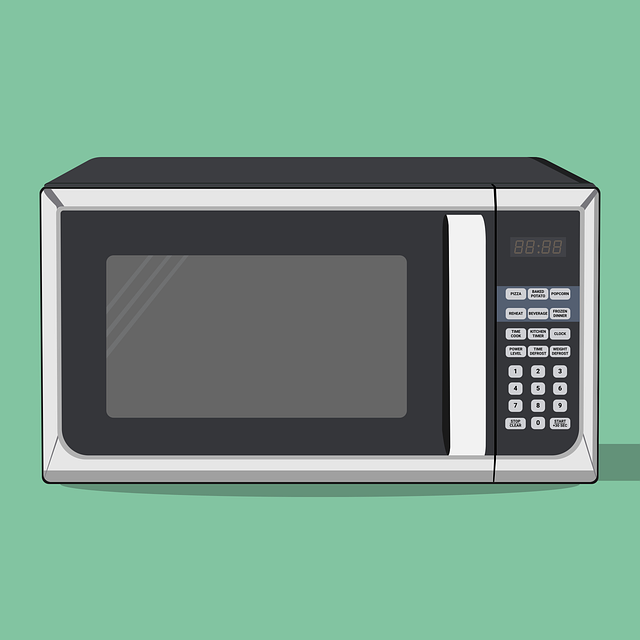When selecting a new freezer to enhance storage capacity within your major appliance suite, it's crucial to consider your kitchen's layout and available space. Upright freezers are ideal for maximizing space with their vertical design, offering multiple shelving units and clear, removable baskets. They're perfect for limited spaces where frozen goods are in high demand. Chest freezers feature a top-lifting lid, making them convenient for storing bulky items or supplementing your refrigerator's freezer space. Both upright and chest freezers come in various sizes to fit different kitchen setups, as standalone units or integrated with existing appliances. For those with space constraints, compact or under-counter freezers are a customized solution that blends well within the kitchen design while providing adequate storage. Proper installation by a qualified technician is vital for safety, adhering to electrical standards, and ensuring optimal performance and longevity of your investment in major appliances.
When integrating a new freezer, prioritize security, efficiency, and the correct installation to ensure durability and safety. Choose an accessible location that meets the freezer's size requirements, is near an electrical outlet, and is clear of obstructions. Always turn off and disconnect power before installation, level the appliance, secure it according to manufacturer instructions, and connect it properly, including water lines for ice makers without leaks. Post-installation, apply any necessary finishes or seals. Adhering to these steps and consulting the manual will help your freezer operate efficiently, storing perishables while maintaining peak performance.
To maintain long-term reliability in your freezer as a major appliance, perform regular checks for power supply issues and inspect internal components for wear. Address any anomalies in operation, such as unusual noises or lack of sound, as they may indicate mechanical failures like a malfunctioning compressor or fan motor. Ensure the integrity of the door seal to prevent warm air intrusion. Clean coils regularly, maintain proper airflow, and check the defrost thermostat and heater for functionality to prevent frost buildup and other efficiency-reducing issues. Routine maintenance, basic troubleshooting, and timely issue resolution are key to extending your freezer's lifespan and keeping it in optimal condition as part of your major appliance investments.
When the need for additional storage space arises in your kitchen, consider the versatile solutions major appliances offer. Whether you’re installing a new freezer or repairing an existing one, understanding your options and following best practices ensures efficient food preservation and space management. This article delves into the nuances of freezer installation for maximized storage, provides a detailed guide to safe and effective setup, and outlines common repairs to maintain your appliance’s reliability. With these insights, you can effectively manage your frozen goods and create more room in your culinary endeavors.
- Understanding Your Freezer Installation Options for Maximized Storage
- Step-by-Step Guide to Safe and Effective Freezer Installation
- Common Freezer Repair Issues and How to Address Them for Long-Term Reliability
Understanding Your Freezer Installation Options for Maximized Storage

When considering the installation of a new freezer to maximize storage space, it’s crucial to assess your available options and kitchen layout to ensure the best fit for your needs. A key factor in this process is understanding the different types of freezers available under the category of major appliances. Upright freezers are a popular choice for their vertical storage design, which can be ideal for space-saving in cramped areas without compromising on capacity. They typically offer multiple shelving options and clear, removable baskets that allow for efficient organization of your frozen goods. Chest freezers, on the other hand, provide easy access to all areas as the lid lifts up, revealing the entire storage space. This type is particularly useful for storing bulk items or when additional freezer space is needed alongside a refrigerator. Both models come in various sizes and can be designed to fit into existing kitchen spaces or standalone units. For those with limited space but high demand for frozen products, compact or under-counter freezers are tailored solutions that blend seamlessly into your kitchen’s design while offering ample storage options for major appliances. Regardless of the model you choose, proper installation by a qualified technician is essential to ensure safe and efficient operation, and to comply with electrical safety standards. Proper ventilation and level placement are also critical to maintain optimal performance and longevity of your freezer, ensuring that your investment in major appliances serves you well for years to come.
Step-by-Step Guide to Safe and Effective Freezer Installation

When incorporating a new freezer into your home or business for additional storage space, safety and efficiency are paramount. Proper installation is crucial to ensure the longevity of your major appliance and to prevent any potential hazards. Before you begin, it’s essential to select a location that accommodates the freezer’s dimensions and provides easy access while minimizing obstruction. Ensure the site has a flat surface to place the unit and is close to an electrical outlet to avoid the need for extensive wiring. Once you’ve chosen the ideal spot, prepare the area by clearing it of any debris or items that could interfere with installation or operation.
With the location ready, you can proceed with the installation process. Start by turning off and disconnecting the power source to the area where the freezer will be installed, as a precaution against electric shock. Next, remove the old appliance if present, and prepare the space for the new unit by leveling the ground or using appropriate under-appliance mats to prevent movement that could cause wear and tear on the appliance. After placing the freezer in position, carefully connect it to the power source, ensuring a secure and snug fit to avoid any electrical issues. Secure the freezer to the cabinet or floor with screws or brackets provided by the manufacturer to prevent it from shifting during use. Finally, connect the water line if your model includes an ice maker, making sure all connections are tight and without leaks. Follow this with attaching any door seals or finishes that may have been removed during transport. With these steps completed, your freezer should be installed safely and effectively, providing you with additional storage space for your perishables while maintaining optimal performance. Always refer to the manufacturer’s instructions for specific models, as installation procedures can vary.
Common Freezer Repair Issues and How to Address Them for Long-Term Reliability

When it comes to maintaining long-term reliability in your freezer, understanding common repair issues is crucial for ensuring its performance and longevity. A malfunctioning freezer can lead to spoiled food and significant inconvenience. One of the most frequent problems encountered with major appliances like freezers is mechanical failure, particularly with the compressor or fan motor, which may result in unusual noise or complete silence during operation—a clear sign that attention is needed. To address such issues, homeowners should first check for power supply problems and then inspect the internal components for wear or damage. If the unit is not starting or running consistently, it could be due to a faulty thermostat, start relay, or door seal. Ensuring the door seal is intact is particularly important as it prevents warm air from entering and affecting the freezer’s temperature consistency.
Another common issue with freezers is frost buildup, which can impair their efficiency and effectiveness. This occurs when the freezer’s defrost mechanism malfunctions or when there is a blockage in the defrost drain. To mitigate this, regular maintenance such as cleaning the coils and ensuring proper airflow around the appliance can prevent excessive frost from accumulating. Additionally, checking the defrost thermostat and heater for functionality is essential. By regularly inspecting your freezer, performing basic troubleshooting, and addressing issues promptly, you can extend its lifespan and ensure that it operates efficiently, providing ample storage space for your perishable items. Regular maintenance can often prevent minor problems from escalating into major repairs, thus safeguarding the investment in your major appliances.
When it comes to safeguarding your perishables and maximizing your kitchen’s functionality, a well-installed and maintained freezer is indispensable. The insights provided in this article on understanding your freezer installation options, along with the step-by-step guide for safe and effective installation, empower you to seamlessly integrate a freezer into your space, optimizing storage capacity for your major appliances. Additionally, being well-versed in common repair issues can help you ensure long-term reliability and prevent inconvenient disruptions to your food preservation needs. By following these guidelines, you’ll enhance your culinary endeavors and maintain the freshness of your ingredients effectively.
